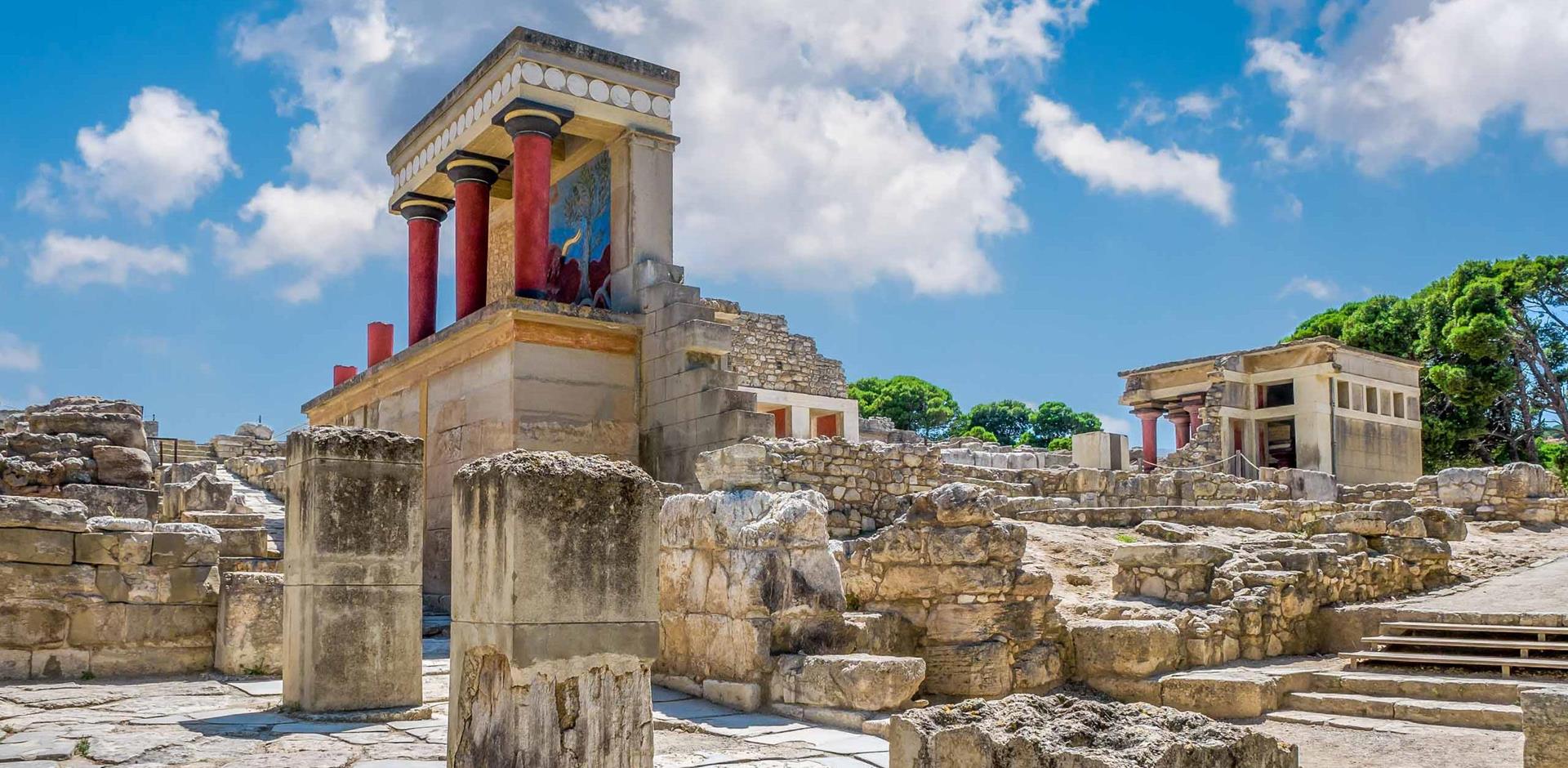
Time Travel Through Stone: Top 10 Historical Ruins Crete
Introduction to Crete’s Rich History
Step back in time and embark on a captivating journey through the rich history of Crete. This enchanting Greek island is not only renowned for its stunning beaches and crystal-clear waters, but it also boasts an extraordinary array of Historical Ruins Crete that will transport you to ancient civilizations. From grand palaces to mysterious scripts, from fortified monasteries to natural wonders with a storied past – Crete has it all. Join us as we uncover the top 10 historical ruins that make this Mediterranean gem a true time-traveler’s dream. Get ready to delve into the fascinating world of Historical Ruins in Crete!
Top 10 Historical Ruins in Crete
Crete, the largest Greek island, is steeped in rich history and dotted with ancient ruins that transport you back in time. If you’re a history buff or simply fascinated by the past, exploring Crete’s historical ruins should be at the top of your travel itinerary.
One of the most impressive archaeological sites on Crete is Knossos Palace. This sprawling complex was built during the Bronze Age and is believed to have been the center of Minoan civilization. As you wander through its labyrinthine corridors and marvel at its colorful frescoes, you can’t help but imagine what life was like thousands of years ago.
Phaistos, another Minoan palace, offers a unique glimpse into ancient script with its mysterious disc known as Phaistos Disc. Covered in symbols that are yet to be fully deciphered, this artifact continues to baffle archaeologists and historians alike.
For a taste of Cretan independence and resilience, visit Arkadi Monastery. This fortified monastery played a pivotal role in the struggle against Ottoman rule in 1866 when it became a symbol of resistance. Today, it stands as a testament to Cretans’ unwavering spirit.
Nature enthusiasts will find Samaria Gorge both awe-inspiring and historically significant. This breathtaking gorge not only offers stunning views but also served as an escape route for rebels during various periods of Cretan history.
Frangokastello is another must-visit historical site on Crete. This Venetian fortress has witnessed centuries of battles and sieges while guarding the southern coast from invaders. Walking through its weathered stone walls feels like stepping into a medieval world frozen in time.
These are just five examples out of many remarkable historical ruins waiting to be discovered on this captivating island called Crete. From palaces adorned with intricate artwork to fortresses standing tall against all odds, each site tells its own story—a tale woven into the very fabric of Cretan history. So, grab your camera and step
Knossos Palace – The Largest Bronze Age Archaeological Site on Crete
Welcome to the fascinating world of Crete’s historical ruins! Today, we’ll embark on a journey through time and explore the top 10 historical sites that make this Greek island so extraordinary. Historical Ruins Crete Our first stop is Knossos Palace, an awe-inspiring Bronze Age archaeological site.
Knossos Palace holds immense significance as it is not only one of the oldest palaces in Europe but also the largest on Crete. Built around 2000 BC, this magnificent structure offers a glimpse into the advanced civilization of the Minoans. As you walk through its labyrinthine corridors and intricate rooms, it’s hard not to be captivated by the rich history that resonates within these ancient walls.
One remarkable feature of Knossos Palace is its vibrant frescoes depicting scenes from everyday life during that era. These beautifully preserved artworks transport you back in time, providing insight into Minoan culture and their way of life. Each brushstroke tells a story waiting to be discovered.
Another highlight at Knossos Palace is undoubtedly the Throne Room with its impressive alabaster throne believed to have been used by King Minos himself. Standing before this majestic seat of power evokes a sense of wonder and allows us to imagine what life might have been like for those who once ruled over this vast empire.
But perhaps what truly sets Knossos Palace apart are the legends surrounding it – myths such as Theseus slaying the Minotaur within its winding corridors or Daedalus constructing his famous labyrinth here. The intertwining stories add an air of mystery and enchantment to this already captivating site.
As we continue our exploration across Crete’s historical ruins, keep your senses attuned for more hidden gems awaiting discovery! Stay tuned for our next stop: Phaistos – A Minoan palace with a unique disc script.
Read Also :- Exploring Ancient Ruins And Rich History:8 Top Things To Do In Crete Greece

Phaistos – A Minoan Palace with a Unique Disc Script
Phaistos, located in southern Crete, is a captivating historical site that takes us back to the Minoan civilization. This ancient palace holds a unique allure with its remarkable architecture and intriguing artifacts. As you wander through the ruins, it’s impossible not to be awed by the grandeur of this once-thriving palace.
One of the most fascinating aspects of Phaistos is its famous Discs. These small clay discs are inscribed with an enigmatic script that has yet to be fully deciphered. The intricate symbols on these discs have puzzled archaeologists for decades, adding an air of mystery and intrigue to Phaistos.
The palace itself was once a bustling hub of political and cultural activity during the height of Minoan civilization. It featured impressive courtyards, storerooms filled with precious goods, luxurious living quarters, and a central courtyard where religious ceremonies were held.
Exploring Phaistos allows visitors to delve into the rich history and daily life of the Minoans. From marveling at intricately decorated walls to imagining what life was like within these ancient walls, every step unveils new insights into this advanced civilization.
As you walk among the ruins at Phaistos, it’s easy to imagine yourself traveling back in time – witnessing firsthand the vibrant culture that flourished here thousands of years ago. Whether you’re a history enthusiast or simply curious about ancient civilizations, visiting Phaistos is an unforgettable experience.
Arkadi Monastery – A Symbol of Cretan Independence
Arkadi Monastery, nestled in the scenic Cretan countryside, stands as a powerful symbol of Cretan independence and resilience. Steeped in history and lore, this monastery has played a significant role in shaping the island’s identity.
The origins of Arkadi Monastery date back to the Byzantine era, but it gained prominence during the Ottoman occupation when it became a center for resistance against foreign rule. The monastery served as both a spiritual sanctuary and a strategic stronghold for rebels fighting for freedom.
One of the most poignant chapters in Arkadi’s history unfolded in 1866 when hundreds of Cretans sought refuge within its walls during an uprising against Ottoman forces. Despite facing overwhelming odds, they chose to sacrifice themselves rather than surrender.
The heroic actions that occurred within these hallowed grounds have left an indelible mark on Crete’s collective memory. Today, visitors can explore the monastery complex with its stunning architecture and well-preserved artifacts that offer glimpses into its turbulent past.
Walking through Arkadi Monastery is like stepping back in time, where every stone tells a story of bravery and defiance. From its imposing fortified walls to its intricately decorated chapel, each element reflects the enduring spirit of those who fought for their freedom.
Visitors can also visit the museum located within the monastery grounds which houses historical relics including weapons used during battles and personal belongings of those who took part in this historic struggle.
To fully appreciate the significance of Arkadi Monastery, one must understand its role not only as a religious institution but also as an emblematic symbol representing Cretan independence throughout centuries. Its legacy continues to inspire locals and travelers alike to honor their heritage while cherishing their hard-won liberties.
Samaria Gorge – A Natural Wonder and Historical Landmark
Samaria Gorge, nestled in the heart of Crete, is not just a natural wonder but also holds significant historical value. This majestic gorge stretches over 16 kilometers and is known as one of Europe’s longest and most breathtaking canyons. With its towering cliffs, crystal-clear waters, and lush vegetation, it truly is a sight to behold.
As you embark on your journey through Samaria Gorge, be prepared to step back in time. The gorge has been inhabited since ancient times by various civilizations such as the Minoans and Byzantines. Along the way, you’ll come across remnants of these past civilizations – from abandoned settlements to stone bridges that stand as silent witnesses to history.
One notable landmark within Samaria Gorge is the ruined village of Samaria itself. Once a thriving community dating back centuries ago, it now lies in ruins but still exudes an aura of mystery and intrigue. Exploring these ancient ruins allows one to imagine what life was like for those who once called this place home.
Aside from its historical significance, Samaria Gorge offers visitors an unforgettable natural experience. As you traverse through its rugged terrain and navigate narrow paths carved into steep cliffsides, you’ll encounter breathtaking vistas at every turn – from dramatic rock formations to cascading waterfalls that dot the landscape.
The highlight of any trip through Samaria Gorge is reaching “Iron Gates,” where the canyon narrows dramatically before opening up into a wider valley beyond. It is here that nature’s raw power becomes evident as you witness how erosion has shaped this magnificent landscape over millions of years.
Whether you’re an avid hiker or simply someone seeking adventure amidst stunning scenery, exploring Samaria Gorge should definitely be on your bucket list when visiting Crete. Its combination of natural beauty and rich history makes it a truly unique destination that will leave lasting memories etched in your mind forever
Frangokastello – A Venetian Fortress Ste

Frangokastello is a captivating historical site located on the southern coast of Crete. This Venetian fortress stands tall and proud, overlooking the crystal-clear waters of the Libyan Sea. Its imposing presence makes it difficult to resist exploring its ancient walls and uncovering its rich history.
Built in the 14th century by the Venetians, Frangokastello served as a strategic stronghold to protect against pirate invasions. The name itself translates to “Frankish castle,” referring to the Western European origin of its builders.
As you step inside this impressive fortress, you are transported back in time. The stone walls whisper stories of battles fought and lives lived within their protective embrace. Exploring each corner reveals hidden chambers, crumbling staircases, and panoramic views that take your breath away.
One cannot help but wonder about the lives of those who once inhabited Frangokastello. What were their hopes and dreams? What challenges did they face? The answers may be lost in time, but their spirit lingers within these weathered stones.
The surrounding landscape only adds to Frangokastello’s allure. Picture-perfect beaches stretch out before you, inviting you for a swim or a leisurely stroll along the shoreline. It’s easy to imagine how this idyllic setting must have captivated both defenders and invaders throughout history.
Whether you are a history enthusiast or simply someone seeking awe-inspiring beauty, Frangokastello will leave an indelible mark on your soul. It is more than just ruins; it is a testament to human resilience and perseverance against adversity.
So next time you find yourself in Crete, make sure not to miss out on visiting this remarkable Venetian fortress steeped in history. Let its ancient walls transport you through time as you immerse yourself in the fascinating stories that echo through every stone
Conclusion
Exploring the historical ruins of Crete is like taking a journey through time. From the ancient Minoan civilization to the Venetian and Ottoman empires, this island has witnessed centuries of history. Each crumbling stone and weathered structure tells a story waiting to be discovered.
The top 10 historical ruins in Crete offer a glimpse into this rich tapestry of the past. Knossos Palace stands as a testament to the once-thriving Minoan culture, while Phaistos intrigues with its enigmatic disc script. The Arkadi Monastery symbolizes Cretan independence and resilience, while Samaria Gorge showcases both natural beauty and historical significance.
And let’s not forget Frangokastello, guarding over the coast with its imposing walls—a reminder of times when empires clashed for control over these lands.
Visiting these remarkable sites allows you to connect with civilizations long gone, immersing yourself in their history and marveling at their architectural achievements. As you walk among these ancient stones, it becomes clear that there is something truly magical about experiencing moments frozen in time.
So pack your bags and embark on an adventure through Crete’s historical ruins—the wonders that await are beyond compare! Let history guide your steps as you traverse this captivating island and unlock its hidden treasures from bygone eras.
Discover Crete’s past; it will undoubtedly leave an indelible mark on your present—and shape your future travels! see more…



